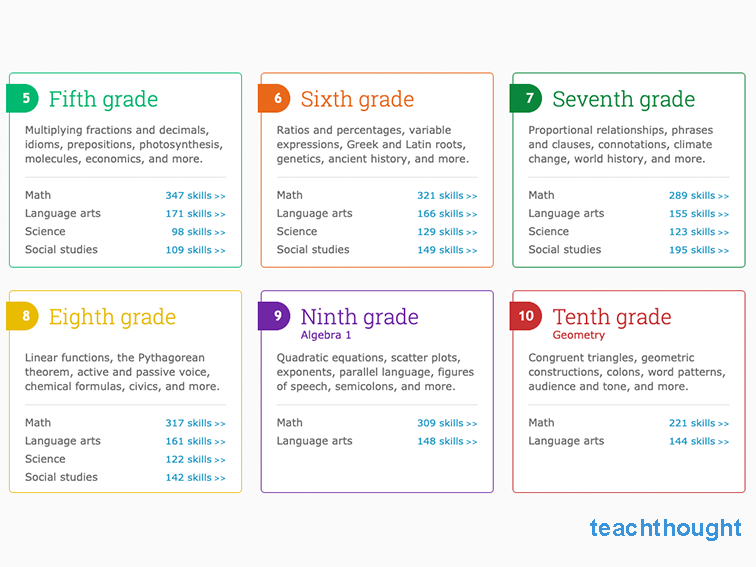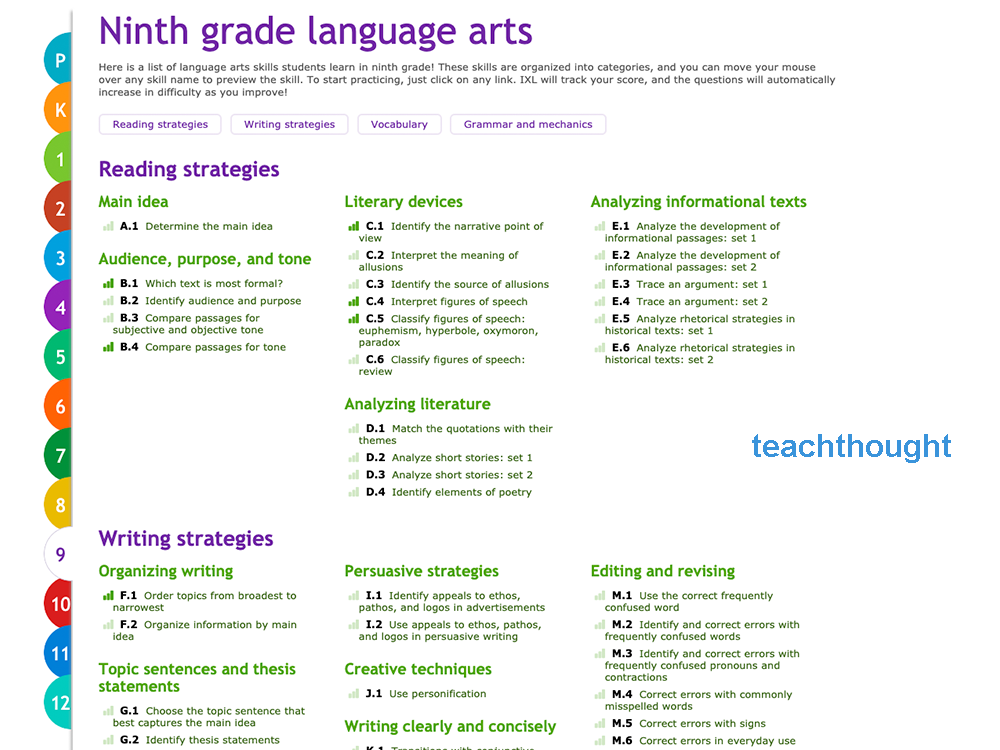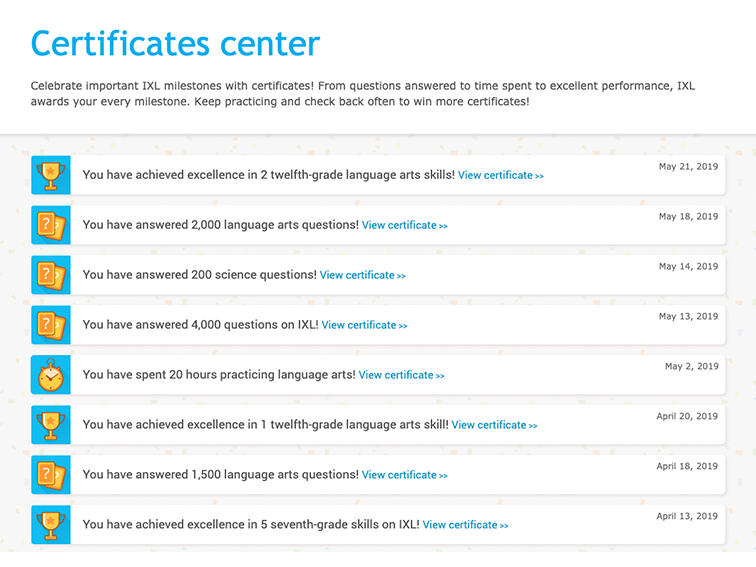
8 Tips For Using IXL — The K-12 Adaptive Learning Platform
by TeachThought Staff
IXL is a personalized learning platform used by over 400,000 teachers worldwide.
It combines curriculum, a Continuous Diagnostic, individual guidance, and real-time analytics to help teachers differentiate instruction for each of their students. IXL has over 7,000 skills covering to support public school or homeschooled learners with a range of needs, abilities, and garde levels.
While it’s not designed expressly for students with disabilities and special needs, it does have skills across contents areas in pre-K through 12, and each skill adapts to the individual learner as they grow. Below are 8 tips to get started using IXL in your classroom or home.
8 Tips For Using IXL With Students
1. Set up your roster
Sign in and click on your name (in the top-right corner) to easily add students, organize classes, and customize your IXL experience.

2. Find skills to work on
There are many different ways to find skills to work on. A few possibilities?
- Under Learning, browse through IXL’s curriculum by subject, grade, and topic to find the right skills for your students.
- View your state standards (under Learning) and check out IXL’s textbook alignments (under Inspiration) to find skills that align with your curriculum.
- Have students visit their Recommendations Wall, which has skill suggestions personalized to their unique needs.
- Looking for a specific skill? Use the search bar at the top of the page!
- When you’ve found a skill you’d like your class to focus on, hover over it and click the star to the left. This will highlight it for your students so they’ll see your assignments when they log in.
You can also have students navigate skills by grade level above and beyond ‘their grade’ to meet their unique learning needs. Below is a screenshot of 9th-grade English-Language Arts, but you can also see the tabs on the left that make broader navigation quick and intuitive.

3. Make IXL a habit
Research shows that answering 15 IXL questions a week leads to student growth, so set this as a benchmark goal in your classroom.
4. Use SmartScore Tips & Tricks
As a student practices, the IXL SmartScore measures how well they understand the skill. By accurately reflecting each student’s growth, the SmartScore motivates them to reach their learning goals.
Here are a few key tips to keep in mind:
- Unlike traditional percentage scoring, the SmartScore factors in question difficulty, answer accuracy, and consistency to determine how well a student understands a skill.
- Improvement is always possible, which motivates students to learn from their mistakes. Even when they miss questions, they can still keep practicing, review the answer explanations, and reach their goal.
- Try setting a goal of 80 (proficiency) to start and tailoring as needed for your students. Remember that a SmartScore of 100 represents true mastery of the skill: a challenging (but engaging) goal!
Want to learn more about the SmartScore? Learn more in this video.
5. Extra Motivation: IXL Awards and Certificates
As students practice, they will earn awards for a variety of achievements including days practiced, total questions answered, amount of time spent on IXL, and more. Plus, printable certificates celebrate reaching individual and class milestones. Try hanging certificates in your classroom to highlight student success—you can even set a goal such as, “let’s cover this whole wall!”
6. Go Mobile
The IXL app is available on many devices. Whether your class has access to tablets or your students have devices at home, they can keep making progress anytime, anywhere! Fun tip: have your students try out the scratchpad feature, which lets them work through problems by writing right on the screen—no scrap paper needed.
7. Gamify It
Consider contests against students, or give personalized goals for individual students by skill or content area. Here are some more ideas for examples of gamification in learning.

8. Let students self-direct their own learning
Above is an example of a 6th-grade student who skips around in grade levels and skills based on his own interest and self-assessed needs and averages around 3 hours a week on the platform.
Depending on how your needs, this may not work. But in some cases, allowing students to self-direct their own learning is a way to improve engagement and retention. Using IXL is simple and the dashboard provides a clear overview of skills and mastery, while the lessons themselves have clearly-marked ribbons to communicate mastery ‘checkpoints.’
It also has diagnostic testing students can use to diagnose their own mastery levels, in addition to analytics reports. Hopefully, as the platform evolves, this kind of data will become even more robust and student-friendly.
Want more helpful tips? Check out IXL’s comprehensive quick-start guides.